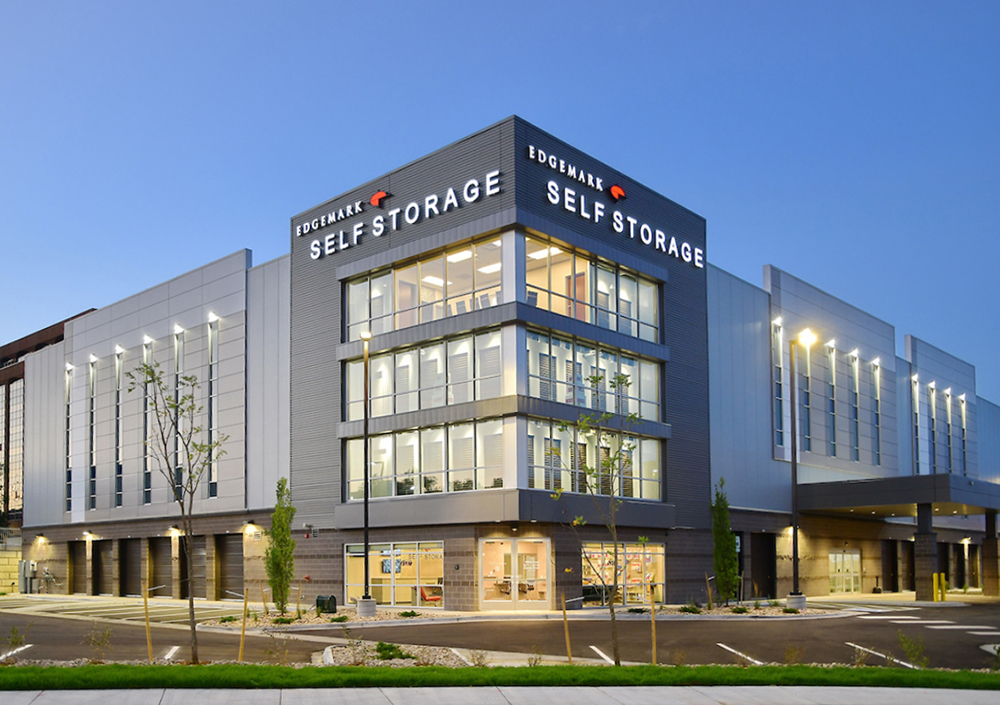The concept of ownership is fairly simple. However, when dabbling in commercial real estate, the question of “Who owns what?” becomes significantly more complex.
For instance, multiple individuals or legal entities can have interest in the same parcel of land. Adding to that, their rights will vary depending on the type of estate (interest) each party holds.
Finding it difficult to follow already? Let’s start at the beginning.
An estate in land describes the interest or rights of a person in a defined parcel of land. There are three main types of estates in commercial property:
- Freehold estates
- Leasehold estates
- Concurrent estates
In the article below, we’ll describe each estate type, how they differ, and reasons to choose one type of commercial property estate type over another.
What is a Freehold Estate?
A freehold estate is the absolute ownership of an area of land. The owner of the freehold estate owns the land in its entirety for all time. This is the highest form of ownership an individual or a company can achieve.
The freehold estate owner is free to do as they please with their property including develop buildings and industrial facilities, erect and demolish structures, improve the land, and perform other activities.
The freehold owner can sell, lease, gift, or donate the land as they see fit, bound only by the established laws, building codes, and regulations in their area.
There are, of course, several types of freehold estates, each with various rights and responsibilities of the owner.
Fee Simple
When you buy a parcel of land for a new development project, what you’re really doing is acquiring the “fee simple absolute” interest. This type of interest in an estate provides you unrestricted rights to the property, within the extent of the law. It’s also inheritable, meaning if at the end of your life you have not distributed the land to anyone specific, it will automatically be inherited by your heirs.
The fee simple ownership is inheritable, transferable, sellable, and subject todonation, gifts, and leases. The fee simple owner is free to construct or develop the land without any permission, except for the government.
Life Estate
A life estate is a type of ownership which only extends to the end of your life. In other words, after you pass away, your interest in the property reverts back to the fee simple owner. Life estates are commonly used for estate planning and residential property with practically no application in commercial real estate.
Other types of freehold estates exist, however, they have phased out of modern practices.
Why Should You Buy a Freehold Ownership?
Freehold ownership guarantees you the freedom to develop your commercial project in any way you want. All buildings and structures you erect on your property also belong to you and you’re free to use and modify them without limitations or conditions.
Here are some other benefits to buying a freehold estate:
- You won’t have to deal with anybody (except the authorities and building inspectors)
- You’ll amass equity that can be used as collateral to secure bank loans or other financial services
- You can build appreciation and possibly profit from a future sale
Keep in mind, though, that all of this freedom comes with a steep price tag. Buying a freehold estate is the single most expensive way to purchase a property. As the freehold owner, you’re also responsible for taxes, maintenance, repairs, insurance, and all other costs associated with the land.
Notice, ownership and possession are two different things. You don’t always need to purchase the land in order to be able to use it for your commercial project.
In fact, some states like Hawaii will not allow you to obtain a freehold interest in the land, no matter how much money you’ve got.
What is a Leasehold Estate?
A leasehold estate is a type of land tenure where one party (the lessee or tenant) pays the owner (the lessor or landlord) for the right to use the land for a specified amount of time.
A leasehold is obtained by a type of ground lease, which can be configured differently, depending on the needs and wishes of both parties. In doing so, the freehold owner transfers some of their rights to the leasehold owner, such as the right to occupy, the right to exclude others, the right to operate a business, and so on.
The lease term is typically for a long duration – anywhere from 30 years all the way up to 999 years. However, these leases are usually set for above 50 years. Because of this, a leasehold can last practically forever, giving the lessee possession of the land to develop commercial buildings and operate businesses on the premises.
With a leasehold estate, the lessee does not own the land, however, and their rights are limited. Every project is pre-approved by the landowner. Modifications to the structures, improvements of the land, and significant changes to the type of business operations at the facilities must also be approved by the landowner.
This limits the flexibility of the leasehold owner to adapt to changing conditions. Depending on the specific lease structure and cooperation of the freehold owner, this may or may not be a significant concern. However, if there is any disagreement between both parties, they are bound to the wording of the lease contract.
Therefore, it’s absolutely necessary to have the contract analyzed by a legal professional to ascertain whether enough provisions are in place to protect the leaseholder’s interest in the property.
Despite not owning the land, the leasehold owner can own the buildings, structures, and improvements they develop on the property. After the lease expires, this immovable property usually reverts back to the freehold owner, together with the land. Depending on the terms, the leasehold owner can be responsible for demolishing the buildings and returning the land to its original state.
The leasehold owner usually has a right to sell and transfer the leasehold to a different person or legal entity during their term.
Throughout the lease, rent is paid periodically – typically monthly or annually, with the rental period specifically defined in the contract. The rent structure can vary. It usually starts as a flat fee which can increase over time to adjust for inflation or can follow a more complicated percentage-based system.
Another problem leaseholders face is obtaining bank loans and other financial services. Since they do not own the land, banks can be reluctant to provide funds, especially if the term of the leasehold is below 50 years.
Why Should You Buy a Leasehold Ownership?
At first glance, it seems that obtaining a leasehold interest is sticking your hand into a hornet’s nest since many of your rights are dependent on provisions in the lease contract.
This is correct, however, there is one significant reason why you should consider a leasehold interest – cost.
Buying the freehold interest in a piece of land is very expensive and requires a huge capital investment before first sod. This often necessitates a hefty mortgage loan, which banks may or may not be willing to extend to you.
In comparison, leasing the land is relatively cheap and most importantly, you pay as you go. Any upfront payment required is usually negligible and the investor can funnel their money directly into the development phase.
Depending on your project, a leasehold estate can be the perfect method of acquiring the land to build on.
Freehold vs Leasehold
Now that we have explained exactly what a freehold estate and leasehold estate is, let’s do a more direct comparison.
| Freehold Estate | Leasehold Estate | |
| Ownership Rights | Owns the land outright and may do anything without restriction with it | Leases, or rents the land to use, develop buildings, and operate a business |
| Lease Term | Retains rights to the land forever or until it is transferred to another party | Is bound by the lease term length (usually 30-999 years) specified in the lease agreement |
| Authority | Maintains absolute authority over the land, needing no approval or permission to construct, develop, modify, renovate, or demolish existing structures (save for building inspectors and related authorities) | Must abide by the conditions outlined in the lease agreement and must receive permission from the freehold owner to make any changes |
| Right to Transfer | Maintains complete rights to transfer, sell, give away, or exchange the land as they see fit | Will need explicit permission before transferring interest in the property or land |
| Cost | Requires a large capital investment and can be extremely costly | Typically requires no upfront costs and is paid in monthly installments, making it affordable |
| Financing | Readily financed by banks since the freehold estate can act as collateral and guarantee the investment | Financing based on a number of factors and is dependent on individual circumstances |
What is a Concurrent Estate?
The final form of ownership is the concurrent estate.
A concurrent estate is created when multiple individuals or legal entities own the same property at the same time. Co-owners are also referred to as joint tenants to the property.
There are several types of concurrent estates, the most common being:
Joint Tenancy
The joint tenancy ensures complete equality of rights between all owners of the property. Each tenant has a complete interest and possession of the property as a whole. The ownership is held under the same title and extends in time equally for all tenants. This means that ownership and tenure of the property ends for all tenants at the same time with neither party being able to sell or transfer their share.
Joint tenants have a right to survive each other, with the last survivor receiving complete ownership of the property.
Tenancy By the Entirety
This tenancy is formed between married spouses for their jointly acquired property. It’s practically identical in nature to a joint tenancy.
Tenancy in Common
This form of ownership allows different parties to own different shares of the same property under different titles.
Each co-tenant can freely operate with their share of the property and sell, trade, or mortgage it at will, without input of the other tenants.
Wrapping Up
Whether you’re a landowner or an investor looking to kickstart your next commercial project, it’s imperative to know the difference between all these forms of ownership and how your rights change from freehold, to leasehold, to concurrent estate owner.
Do you have a piece of land or property you’d like to offer as a freehold, leasehold, or concurrent estate? Then check out CREOP, the advanced online software designed to make marketing your land and property, negotiating deals, and finalizing sales a cinch. Get in touch with us today and see how we can help you advertise your parcel and get it sold right away.




